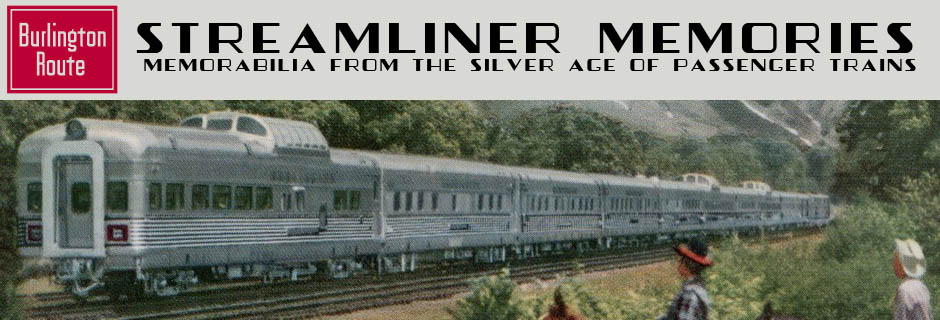Although Diesels grace the cover of this timetable in both the Royal Gorge and near the Moffat Tunnel, Rio Grande was still running a few steam-powered passenger trains. Rio Grande ran five passengers trains a day each way through the Moffat Tunnel: the overnight, Diesel-powered, streamlined Prospector; the Diesel-powered, vista-domed but not-yet-fully-streamlined Exposition Flyer; the steam-powered Mountaineer to Grand Junction and Montrose; the daylight trains 9 & 10 to Craig; and the overnight trains 23 & 24 to Craig, both of which were steam powered.
 Click image to download an 8.8-MB PDF of this timetable.
Click image to download an 8.8-MB PDF of this timetable.
It appears only one daily train went through the Royal Gorge, the Diesel-powered Royal Gorge. A train that once went to Montrose via Gunnison had been replaced by a bus. Rio Grande also had one train a day from Pueblo to Alamosa; the narrow-gauge train from Alamosa to Durango; and a three-day-a-week train from Durango to Silverton. The railroad also had a daily train from Salt Lake to Marysville, which is pretty amazing considering that Marysville had fewer than 600 residents at the time.
One more train on the timetable is the Colorado Eagle, which was really a Missouri Pacific train from St. Louis to Pueblo that continued on the Rio Grande to Denver. Missouri Pacific, Rio Grande, and Western Pacific were all once controlled by George Gould, and Missouri Pacific continued to control the Rio Grande for several years after Gould died but lost that control in the 1930s. This allowed the Rio Grande to build the Dotsero Cutoff and partner with the Burlington with Chicago-San Francisco trains.
The timetable also reveals that Western Pacific had two trains a day through the Feather River Canyon in 1948. In addition to the Exposition Flyer, which went through the canyon in daylight, there was the Royal Gorge, which connected with the Rio Grande train of that name as well as the Prospector in Salt Lake City and which went through most of Nevada in daylight but through the canyon at night.
This 16-page timetable is filled out with two full-page ads promising vista-dome coaches on the Exposition Flyer and a third full-page ad for the California Zephyr, “which will go into daily Chicago-San Francisco service later this year.” In fact, that train began operation on March 20, 1949.
